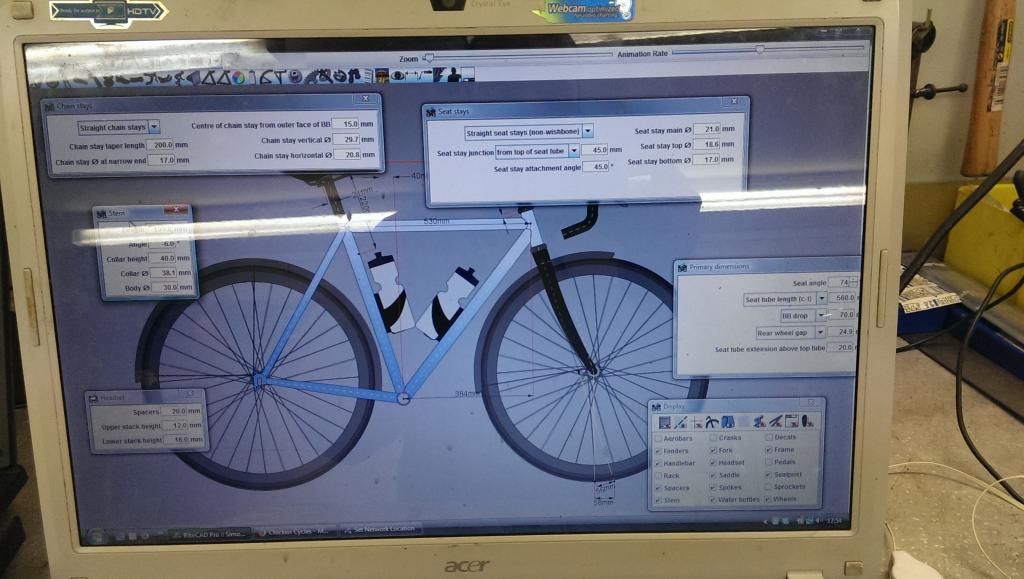Beginning to build the frame...
It all got serious today because we began to mitre our frame tubes. First up was the seat tube - a fairly simple 90 degree mitre at the bottom so that it would butt up against the bottom bracket shell. Reynolds 631 is a lot harder than the steel we had been filing so far so it was a bit more effort.
Let's rip into that Reynolds Steel!
The first mitre was soon complete, checked on the bottom bracket shell with a tri square to ensure it was straight. The second mitre was another 90 degree one on the down tube, again nothing difficult, except that once cut it was going to need a notch cut in one of its ears to allow it to butt up against the seat tube.
To get the angle correct for the notch, it was time to get the head tube, seat tube and bottom bracket shell in the jig. This was a slightly complicated operation involving all sorts of measuring, adjusting and re-measuring.
Bottom bracket drop - 70mm, thus the forks bolt into an axle this height above the bottom bracket shell boss.
Here's the frame so far in the jig
With the jig set up the notch could be measured and also the length and position of the down tube on the headtube could be set up.
This is where it all went a little wrong for me - I set it all up and measured everything about 5 times but failed to take into account that I was measuring the distance from the edge of the notch to the head tube, and should have been measuring from the edge of the notch to the ears on the mitre joint with the head tube - a difference of about 7mm. I didn't pick it up and neither did either of the course tutors so I broke out the hacksaw and chopped off the end of the tube.... Oops.
Luckily I'd added 5mm to the measurement before I'd cut it so with a little very careful and meticulous filing, checking backwards and forwards on the jig I managed to get the tube to fit without having to shorten the frame or make any alterations, except now the downtube is about 3mm lower than intended on the headtube - not a big issue! Phew.
That was all I got done today...
As an aside, I'm beginning to realise how much I've taught myself by taking old bikes apart and putting them back together over the years: there's a 10-day course in cycle maintenance taking place alongside ours and of an evening the people doing it are complaining about how difficult it is to adjust front and rear derailleurs or how it's impossible to work out how get a cassette off a rear wheel... And they're doing it with all the right tools, a course book to show them what to do and with the bike held exactly at eye level on a purpose-built stand. Perhaps they should try working it out for themselves in a draughty garage with the bike standing on the floor - there's a lot to be said for that ;-)
Anyway I spent an hour this evening showing a couple of the chaps how to set up the gears on a mountain bike so that the derailleurs were both in line and changing with indexed precision. They soon seemed to work it out once they could see how the adjustment screws worked...
More nerve wracking mitring and hack sawing tomorrow I guess...














































